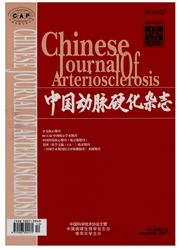

 中文摘要:
中文摘要:
动脉粥样硬化(As)是一种慢性炎症性血管疾病,各类免疫细胞的活性在其形成过程中均具有重要的作用。研究证实唾液酸结合性免疫球蛋白样凝集素(Siglec)家族与多种炎症免疫细胞的活性调节关系密切,如Si-glec-1,5和7与单核/巨噬细胞活性显著相关,Siglec-2,10参与B淋巴细胞活性调节,Siglec-5,9和14能够调控中性粒细胞活性等,提示Siglec家族可能通过调节免疫细胞活性参与As形成的过程。尽管目前尚缺乏全面的直接证据,但已证实Siglec-1与As病变的形成显著相关,且抑制其表达能够显著减轻病变的程度。为从糖生物学的角度审视As形成中炎症免疫因素的作用机制,并探索防治As的可能新靶点,本文拟对Siglec家族与As相关性免疫细胞关系的研究进展作一综述。
 英文摘要:
英文摘要:
It has been widely accepted that atherosclerosis is a chronic inflammatory disease of blood vessels, and immune cells play an important role in atherosclerosis, but the specific mechanism of the inflammatory immune factors still need more comprehensive and in-depth discussion. With the development of technology,the importance of glycobiology in immune response has been found. Among them, sialic acid binding immunoglobulin-like lectin (Siglec) families is closely related to inflammatory immune cells and have higher species-specific. Siglec-1, 5 and 7 are associated with the activity of monocyte and macrophage, Siglec-2 and 10 modulate the activity of B lymphocyte, Siglec-5, 9 and 14 are associated with the activity of neutrophil. It is indicated that Siglec may take part in the formation of atherosclerosis through reg- ulating the activity of immune cells. Although there is few direct evidence supporting the hypothesis, studies have shown that inhibition of Siglec-1 expression can attenuate atherogenesis in ApoE-deficient mice. The study tries to explore new mechanism of inflammatory immune factors in atherosclerosis and new potential targets to prevent the atherosclerosis through the perspective of glycobiology. Therefore, it discusses the advances in the relationship between Siglec and atherosclerosis associated immune cells.
 同期刊论文项目
同期刊论文项目
 同项目期刊论文
同项目期刊论文
 期刊信息
期刊信息
